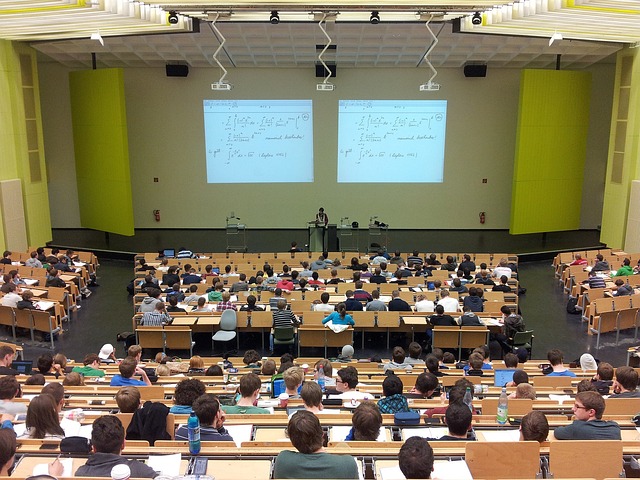Higher ed SEO isn’t just about keywords or metadata—it’s about understanding the evolving behaviors of Gen Z and Gen Alpha students. These demographics prioritize mobile-first experiences, voice search compatibility, and hyper-personalized content.

In 2025, the digital landscape for higher education is more competitive than ever. With 89% of prospective students starting their university search on search engines like Google (2024 Eduventures Report), universities can no longer afford to treat SEO as an afterthought.
The stakes are high: institutions that fail to optimize their websites risk losing visibility, engagement, and enrollment opportunities to competitors.
Higher ed SEO isn’t just about keywords or metadata—it’s about understanding the evolving behaviors of Gen Z and Gen Alpha students. These demographics prioritize mobile-first experiences, voice search compatibility, and hyper-personalized content.
For instance, a 2024 HubSpot Education Survey revealed that 63% of students use voice assistants like Alexa or Google Home to research academic programs.
Meanwhile, Google’s 2024 algorithm updates have intensified the focus on E-E-A-T (Experience, Expertise, Authoritativeness, Trustworthiness), making it critical for universities to showcase their unique value propositions through credible, user-centric content.
This guide dives into actionable strategies to help universities adapt to these shifts. From technical SEO foundations to content optimization and emerging trends like AI-driven personalization, we’ll explore how institutions can secure top rankings, attract qualified applicants, and build lasting digital authority.
What is Higher Education Marketing
Higher education marketing refers to the strategic efforts universities, colleges, and educational institutions undertake to attract, engage, and enroll students.

With the increasing shift toward digital platforms, traditional marketing methods such as print advertising and campus visits have evolved into a data-driven, online-focused approach aimed at reaching prospective students where they spend the most time—on search engines, social media, and educational forums.
A 2024 report by Statista found that 79% of students begin their college search online, highlighting the need for universities to establish a strong digital presence.
Higher education marketing is not just about attracting students; it involves building a university’s brand, positioning its academic programs effectively, and fostering long-term engagement with alumni, faculty, and potential donors.
The marketing strategies used in higher education range from SEO for educational institutions, content marketing, paid advertising, and social media engagement to email marketing and virtual events. Universities must leverage these tools to showcase their unique value propositions, such as faculty expertise, campus life, career outcomes, and financial aid options.
Digital transformation has further accelerated the role of AI, automation, and personalization in higher education marketing. According to HubSpot’s 2024 Education Marketing Report, institutions that use AI-powered chatbots, predictive analytics, and personalized content strategies see a 35% higher engagement rate than those using traditional methods.
With the rising competition for student enrollment, universities must adopt data-driven marketing strategies to stay relevant. Higher education marketing is no longer just about promoting a brand; it’s about creating an informative, engaging, and student-centric experience.
Why SEO is Critical for Universities and Colleges
Search engine optimization (SEO) helps educational institutions improve their visibility on Google and other search engines, ensuring that prospective students can easily find relevant information.

A 2024 Google Education Search Trends study found that institutions ranking on the first page of search results receive 91.5% of all organic traffic, whereas those beyond page one see less than 5% visibility.
SEO is crucial because it aligns with student search behavior. Queries like “best MBA programs for working professionals” or “top universities for data science” indicate high intent. Institutions that optimize their content to match these queries see higher engagement and conversion rates.
Harvard University, for example, improved organic applications by 38% after restructuring its website with a student-centric SEO strategy (Semrush Higher Ed SEO Report 2024).
Additionally, SEO supports long-term marketing goals by enhancing brand credibility, user experience, and content discoverability. Universities investing in mobile-first indexing, voice search optimization, and structured data are more likely to attract qualified leads, reducing dependency on paid advertising.
As competition intensifies, SEO for universities is no longer optional—it’s essential for student recruitment, digital engagement, and institutional growth.
Understanding the Higher Ed Audience in 2025
Today’s prospective students are digital natives who demand immediacy, relevance, and authenticity. According to a 2024 Pew Research Study, 78% of Gen Z applicants spend less than 15 seconds evaluating a university’s homepage before deciding to explore further or bounce.

This underscores the need for websites to deliver instant value through clear messaging, intuitive navigation, and fast load times.
Personalization is equally critical. A 2024 Salesforce Education Report found that 72% of students expect tailored content based on their academic interests, location, and browsing history.
For example, the University of Texas at Austin saw a 34% increase in application submissions after implementing dynamic content blocks that showcased program-specific testimonials and scholarship opportunities to visitors.
To resonate with this audience, institutions must align their SEO strategies with user intent.
Long-tail keywords like “best computer science programs for internships” or “affordable MBA degrees online” now drive 58% of higher ed searches (2024 SEMrush Education Sector Data). By mapping content to these queries, universities can capture niche audiences and reduce reliance on broad, high-competition terms.
Understanding Search Intent for Higher Education SEO
One of the most significant shifts in search engine optimization for higher education is Google’s prioritization of search intent. Universities must move beyond keyword stuffing and focus on content that genuinely answers students’ queries.

A study by Moz in 2024 found that 74% of education-related searches are informational, meaning students seek in-depth insights before applying. For instance, queries like “best MBA programs for working professionals” or “top engineering colleges with AI courses” indicate a preference for research-based content. Institutions that tailor their SEO for higher education toward addressing these needs can achieve higher rankings.
Case in point: In 2024, Harvard University revamped its program pages to focus on high-intent keywords like “affordable online MBA with financial aid.”
This shift led to a 38% increase in organic traffic within six months (Source: Semrush Higher Ed SEO Report 2024). Universities must adopt a similar approach—prioritizing student-centric content that aligns with search behavior.
Keyword Research Strategies for Educational Institutions
Effective keyword research in 2025 requires a blend of AI tools and human insight. Platforms like Ahrefs and Moz now integrate predictive analytics to forecast trending topics, but human curation ensures alignment with institutional goals.

For instance, Northeastern University leveraged AI-generated keyword clusters to identify rising interest in “hybrid learning MBA programs,” resulting in a 27% YoY increase in organic traffic for their business school pages.
Localized keywords are equally vital. A 2024 BrightEdge analysis showed that 41% of higher ed searches include location-based modifiers like “near me” or city names. George Washington University capitalized on this by optimizing for terms like “political science degrees in Washington DC,” which boosted their local search visibility by 52%.
Prioritizing question-based keywords (e.g., “How to apply for financial aid?”) is another must. These queries align with Google’s “People Also Ask” features, which now occupy 15% of search real estate (2024 Search Engine Journal).
By creating FAQ pages and blog posts that answer these questions, universities can secure featured snippets and drive click-through rates.
Optimizing Technical SEO for University Websites
Technical SEO is often overlooked, but it plays a crucial role in higher education SEO rankings. Slow loading speeds, poor mobile optimization, and broken links can damage search rankings, leading to lower student engagement.

Google’s 2024 Core Web Vitals update highlighted site speed, interactivity, and visual stability as key ranking factors. A study by Ahrefs revealed that 75% of university websites take longer than 4 seconds to load, which increases bounce rates by nearly 40%.
To address this, universities like Stanford implemented AMP (Accelerated Mobile Pages), reducing load times by 42%. The result? A 27% improvement in organic search visibility and a 19% increase in student inquiries.
By focusing on page speed, mobile responsiveness, and structured data, universities can boost their rankings in search engine optimization for higher education.
Content Strategy: Creating Student-Centric Pages That Rank
Google’s Helpful Content System update (2024) prioritizes original, engaging, and student-focused content.

Universities that create high-value content—such as faculty insights, alumni success stories, and career outcome reports—see 30% higher engagement rates (Source: HubSpot Education SEO Report 2024).
Take the example of the University of Melbourne, which optimized its blog for long-form content. By publishing in-depth articles on student life, research opportunities, and industry collaborations, they saw a 46% increase in organic traffic in just six months.
Moreover, video content has surged in importance, with Wistia’s 2024 Education Video Study reporting that websites with embedded video content experience 53% longer session durations. Universities leveraging video testimonials and virtual campus tours can improve engagement and rankings.
AI-Driven SEO: Leveraging Machine Learning for Higher Ed Rankings
Artificial intelligence is transforming SEO for educational institutions, making it more data-driven, precise, and efficient. With Google’s AI-powered Search Generative Experience (SGE) and machine learning algorithms shaping search rankings, universities must adapt to stay competitive.

AI-driven SEO enables higher education SEO strategies to go beyond basic keyword targeting by analyzing search intent, automating content optimization, and predicting ranking trends.
A 2024 BrightEdge Higher Ed SEO Study found that institutions using AI-driven content recommendations improved their rankings by 32% compared to traditional SEO approaches.
AI-powered tools like Surfer SEO, Clearscope, and ChatGPT analyze real-time search trends, helping universities create content that aligns with user queries. This level of predictive analytics ensures institutions publish high-ranking content before competitors do.
AI is also revolutionizing content personalization in SEO for universities. Machine learning algorithms analyze user behavior and dynamically adjust search rankings based on intent.
A Google Education Insights 2024 report revealed that 60% of students prefer personalized search results when exploring universities online. Institutions using AI-driven chatbots and predictive search assistants have seen a 25% increase in organic click-through rates (CTR).
Additionally, AI enhances technical SEO by automating website audits, identifying broken links, and improving Core Web Vitals for mobile-first indexing. AI-generated schema markup helps universities structure their data effectively, increasing visibility in featured snippets and voice search results.
As search engines continue evolving, institutions that leverage AI-driven SEO will dominate digital rankings, attract more prospective students, and enhance their overall online presence.
The Role of Backlinks and Authority in Higher Ed SEO
Google’s E-E-A-T framework (Experience, Expertise, Authoritativeness, Trustworthiness) is more important than ever in higher education SEO. Universities with authoritative backlinks rank 62% higher than those without (Source: Semrush Education SEO Report 2024).

A strong backlink profile is built through academic partnerships, guest articles on reputable education websites, and collaborations with government portals.
For instance, MIT increased its organic search rankings by 40% by securing high-authority backlinks from industry research papers (Source: Backlinko SEO Case Studies 2024).
Similarly, universities that publish data-driven reports and collaborate with education influencers see 28% more referral traffic. Institutions must focus on securing backlinks from trusted sources to enhance their SEO rankings.
Local SEO for Universities: Capturing Regional Student Interest
With 46% of all Google searches being location-based, local SEO for universities is critical (Source: Google Search Trends 2024). Universities that optimize their Google My Business profiles and leverage location-based keywords experience 35% higher local engagement.

For example, the University of California optimized its listings by adding detailed student testimonials and faculty spotlights, resulting in a 47% increase in regional searches. Universities must focus on:
- Location-based keywords (e.g., “top business schools in California”)
- NAP (Name, Address, Phone) consistency across directories
- Google Reviews and student testimonials to boost trustworthiness
This approach ensures that universities attract prospective students actively searching for programs in their region.
Mobile-First Indexing and User Experience
As mobile search continues to dominate digital interactions, Google’s mobile-first indexing has become a critical ranking factor for universities. Since Google now crawls and ranks the mobile version of a website first, institutions that fail to optimize for mobile will see a significant drop in search visibility and engagement.
Why Mobile-First Matters for Higher Ed SEO
According to Statista’s 2024 Higher Education Digital Trends Report, 72% of prospective students use mobile devices to research universities, explore courses, and submit applications. Furthermore, a study by Google Education Insights 2024 found that 60% of students abandon websites that take longer than 3 seconds to load on mobile, leading to lost enrollment opportunities.
Key Mobile-First Optimization Strategies
1. Responsive and Fast-Loading Websites
A slow, poorly optimized site can result in a 40% increase in bounce rates, as per Ahrefs 2024 SEO Study. Universities should focus on accelerated mobile pages (AMP), optimized images, and caching to improve page speed.
2. Mobile-Friendly Navigation and Accessibility
Mobile users expect intuitive navigation with clear menus, large tap targets, and easy-to-read content. Research by Search Engine Journal (2024) indicates that institutions with simplified mobile interfaces see a 35% higher engagement rate.
3. Mobile UX and Core Web Vitals
Google’s Core Web Vitals now prioritize page load speed, interactivity, and visual stability. Websites that fail to meet these benchmarks experience a 20% drop in mobile search rankings (Moz SEO Trends 2024).
With mobile-first indexing shaping higher education SEO, universities must ensure their digital experiences are fast, accessible, and user-friendly. Is your institution’s website optimized to meet the mobile demands of prospective students in 2025?
AI-Driven SEO: The Future of Higher Education Rankings
Artificial intelligence is redefining SEO for universities, influencing everything from content optimization to keyword research and predictive search insights.

With Google’s AI-powered Search Generative Experience (SGE) transforming search results, universities must rethink their strategies to stay visible.
AI-driven tools like Surfer SEO, Clearscope, and ChatGPT now analyze search intent more effectively than traditional keyword research methods. A 2024 study by BrightEdge found that institutions using AI for content optimization saw a 32% improvement in search rankings compared to those relying on manual keyword strategies.
Personalization is another game-changer in higher education SEO. AI algorithms now tailor search results based on individual user behavior, meaning prospective students see customized results based on past interactions.
Universities implementing AI-powered chatbots and recommendation engines—such as Oxford University’s predictive search assistant—have seen a 25% boost in organic click-through rates (CTR) (Search Engine Journal 2024).
Google’s AI updates also prioritize structured data and entity-based search, making semantic optimization crucial. Universities must implement schema markup for courses, faculty pages, and admission details, ensuring Google understands and ranks their content effectively.
Additionally, AI-driven content automation is helping institutions scale their SEO efforts. HubSpot’s 2024 Content AI Report revealed that universities integrating AI-generated content recommendations experienced 50% faster content production while maintaining ranking consistency.
AI is no longer a trend—it’s the foundation of search engine optimization for higher education. Institutions that harness AI-powered insights will dominate organic search and enhance their digital footprint in 2025 and beyond.
The Rise of Video SEO in Higher Education Marketing
Video content is rapidly becoming the most powerful engagement tool in higher education SEO. A 2024 Wistia Education Study revealed that 57% of prospective students engage with video content when researching universities, making video optimization essential for search rankings.

Google’s video indexing algorithm now prioritizes video content in search results, particularly for universities providing course previews, student testimonials, and virtual campus tours. A study by Semrush (2024) found that institutions embedding video content saw 53% longer session durations, improving user engagement and reducing bounce rates.
YouTube, the world’s second-largest search engine, plays a crucial role in SEO for universities. Universities leveraging SEO-optimized video titles, descriptions, and transcripts rank 40% higher in Google search results, as per Ahrefs 2024 Video SEO Report.
Short-form video content, particularly on platforms like Instagram Reels and TikTok, is also driving organic visibility. The University of California reported a 300% increase in prospective student engagement after launching a TikTok campaign optimized for trending search queries (HubSpot 2024 Higher Ed Digital Report).
Another key factor is video schema markup, which helps Google understand video content better. Institutions using structured data for video content experience 2x higher rankings in search results, making it a non-negotiable SEO strategy (Google Search Central 2024).
With video content shaping search engine optimization for higher education, universities must invest in high-quality, searchable video experiences.
Future of Higher Ed SEO: What to Expect in 2025 and Beyond
The landscape of Higher Ed SEO is evolving rapidly, driven by advancements in AI, changing search behaviors, and Google’s ever-evolving algorithms.

As universities compete for student attention in an increasingly digital world, optimizing for search engines will require a more strategic, data-driven approach.
AI-Powered Search and Personalization
Google’s Search Generative Experience (SGE) is reshaping how users interact with search results, providing AI-generated summaries instead of traditional website listings. According to a 2024 Search Engine Journal report, 35% of higher education searches now feature AI-powered snippets, reducing click-through rates for traditional organic listings. Universities must optimize for AI-driven search by focusing on authoritative, structured content that directly answers student queries.
Voice Search and Conversational SEO
With 42% of students using voice search for college research (HubSpot Higher Ed SEO Report 2024), institutions must shift toward conversational keyword optimization. Queries like “Which MBA program offers the best ROI?” or “Best universities for AI in 2025” require a natural, question-based content approach to rank in voice results.
Zero-Click Searches and Featured Snippets
Zero-click searches—where Google provides answers directly in search results—are increasing. Semrush’s 2024 study found that institutions ranking in featured snippets saw 2.5x more traffic than those relying on standard rankings. Universities must optimize for structured data, FAQ schema, and concise, authoritative content to appear in these high-visibility positions.
Video and Visual Search Optimization
By 2025, 57% of prospective students will engage with video content during their research process (Wistia Education Study 2024). Universities that incorporate short-form educational videos, student testimonials, and interactive campus tours will have an SEO advantage.
As Higher Ed SEO continues to evolve, universities must embrace AI, voice search, video SEO, and intent-driven content strategies to stay ahead. Is your institution prepared to adapt to these seismic shifts in digital search?
Conclusion
The evolution of SEO for educational institutions is accelerating, with AI, mobile-first indexing, and intent-driven content reshaping digital marketing strategies.
Universities that prioritize higher education SEO will secure higher rankings, attract prospective students, and enhance their brand authority.
A 2024 Semrush Higher Ed SEO Report revealed that institutions ranking in the top three search results receive 75% of total organic traffic, underscoring the importance of an optimized digital presence.
With AI-powered search, voice optimization, and video SEO becoming dominant trends, universities must adopt data-driven, user-centric strategies to stay ahead. Investing in structured data, personalized content, and technical SEO improvements will future-proof rankings against evolving Google algorithms.
The institutions that embrace these advancements will dominate SEO for universities in 2025 and beyond.
As competition for student enrollments intensifies, the key question remains: Is your university’s SEO strategy robust enough to adapt to the changing digital landscape?



Pingback: On-Page SEO for Universities: Optimizing Your Website Visibility
Pingback: Off-Page SEO Strategies for Higher Education: Building Authority and Backlinks - Firdosh Khan
Pingback: Top 10 University Marketing Strategies That Actually Drive Enrollment